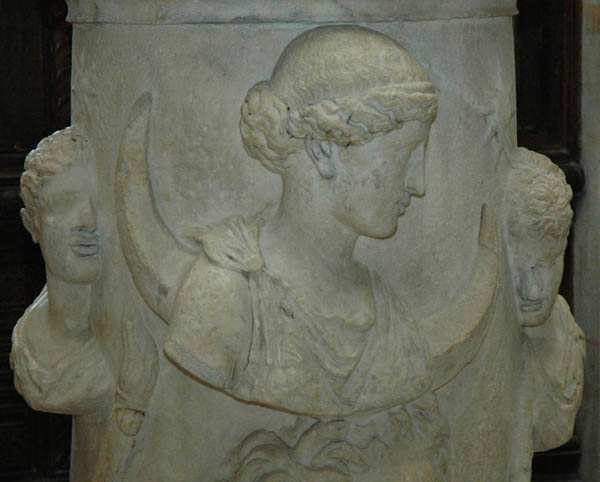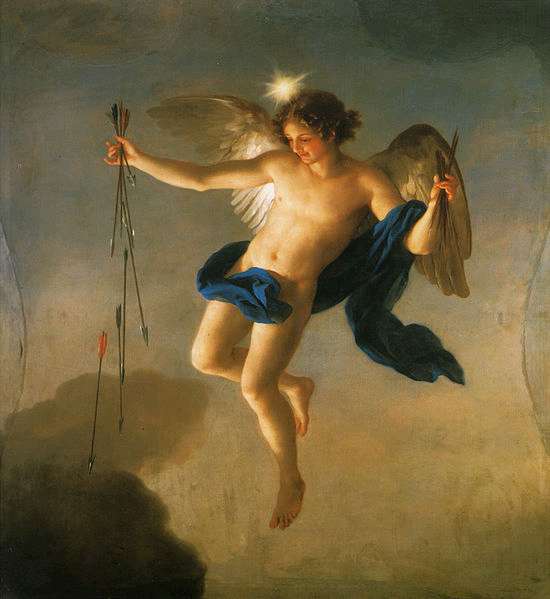
2nd-century sculpture of the moon goddess Selene accompanied by Hesperus and Phosphorus: the corresponding Latin names are Luna, Vesper and Lucifer.
Hesperus/Vesper
Symbolism
[Hesperus (Greek), Vesper (Latin). Brother of Lucifer/Phosphorus. Holding Arrows.]
'In Greek mythology, Hesperus (Greek Ἓσπερος Hesperos) is the Evening Star, the planet Venus in the evening. He is the son of the dawn goddess Eos (Roman Aurora) and is the brother of Eosphorus (also called Phosphorus, and Lucifer), the Morning Star. Hesperus' Roman equivalent is Vesper (cf. "evening", "supper", "evening star", "west"[1]). Hesperus' father was Cephalus, a mortal, while Eosphoros' was the star god Astraios'. http://en.wikipedia.org/wiki/Hesperus
Phosphorus is the planet Venus when it appears as the morning star. Hesperus is the planet Venus when it appears as the evening star. The early greeks believed these to be two distinct astronomical bodies and assigned two distinct dieties to the planet as it appeared respectively in the morning and evening. The later greeks adopted the Babylonian view that the morning and evening star were a single wandering star and associated it with the goddess Aphrodite(l. Venus).
Dictionary
ves·per [ves-per] Show IPA
noun
1. ( initial capital letter ) the evening star, especially Venus; Hesper.
2. Also called vesper bell . a bell rung at
evening.
3. vespers, ( sometimes initial capital letter )
Ecclesiastical .
a. a religious service in the late afternoon or the
evening.
b. the sixth of the seven canonical hours, or the service for it, occurring in
the late afternoon or the evening.
c. Roman Catholic Church . a part of the office to be said in the evening by
those in major orders, frequently made a public ceremony in the afternoons or
evenings of Sundays and holy days.
d. evensong.
4. Archaic . evening.

2nd-century sculpture of the moon goddess Selene accompanied by
Hesperus
and Phosphorus: the corresponding Latin names are Luna, Vesper and
Lucifer.

Arrows Hesperus as Personification of the
Evening by Anton Raphael Mengs (1765).